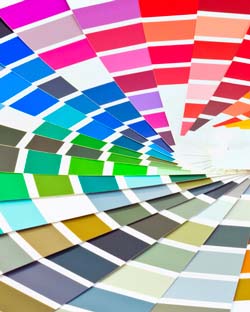Ask Mr. Sage: How Light and Growing Conditions Affect Flower Color

Dear Mr. Sage,
I purchased Elk Tomato Red Jame Sage, which your catalog describes as being a deep red-orange. Early in the day the flowers do appear to be an orange-tinted red, but not the deep red-orange of your photo. In the evening, the blossoms have a faded red appearance. I'm confused by the color of this Salvia and wonder whether I received the correct plant.
Thanks,
Concerned about Color
Dear Concerned about Color,
Nothing is impossible, but based on our order and shipping process, I doubt that we sent you the wrong plant. However, many factors can cause flower color to vary, including differences in climate, season, weather and even time of day.
The flower color of our plants in your garden may not always exactly match the colors in our photographs. This is due, in part, to the way changing light conditions during the day affect the look of a plant both in real life and in a photograph. What looks deep red-orange to us early in the day may look much paler by late afternoon.
The color of foliage as well as flowers also may vary from our garden to yours based on differences in growing conditions. These variations include soil chemistry, such as pH -- the measurement of acidity versus alkalinity -- and fertility, which refers to proportions of essential nutrients, such as nitrogen.
Other factors that affect plant pigmentation are day and night temperatures, the intensity of sunlight, altitude, air and soil pollution, excessive rainfall or dry weather and stress from non-beneficial insects.
Color isn't as consistent as we might like it to be. It's also a bit of a magic trick. Plant pigments create color by reflecting sunlight. These include anthocyanins (blues, reds, pinks, purples), carotenoids (bright yellows, oranges, red-oranges), flavonols (pale yellows) and chlorophyll (greens).
One example of color change concerns the impact of temperature and soil chemistry on anthocyanins, which increase in cold weather and make flowers appear redder. However, heavy acidity in soil can cause the anthocyanins in a red flower to absorb more aluminum and shift toward blue.
Acid-rain pollution shifts soil pH toward greater acidity and thereby increases uptake of aluminum. Hydrangeas are a classic case of a color-shifting flower. As pH becomes more acidic, the plant's flowers turn blue. With less acidity, hydrangeas become pinker.
The combination of high altitude and intense sunlight is another example of a color changer. A classic case concerns buttery yellow roses that quickly fade to cream in these conditions.
Nature is full of surprises. So please forgive us if a plant that we describe as being "clear pink" or "tomato red" appears somewhat different in your garden. Also, please keep in mind that two people viewing the same flower in the same place and under the same conditions may describe its color differently.
However, if your plant's flowers vary markedly from the color you were expecting, please feel free to contact us for further help. Send along some photos of your plant and we will do our best to help you understand the color variation.
Thanks for Your Question,
Mr. Sage
"Ask Mr. Sage" is a question-and-answer feature based on topics raised in calls and emails that Flowers by the Sea receives. To send a query, just click on the Ask Mr. Sage button on this page.

Comments
There are no comments yet.